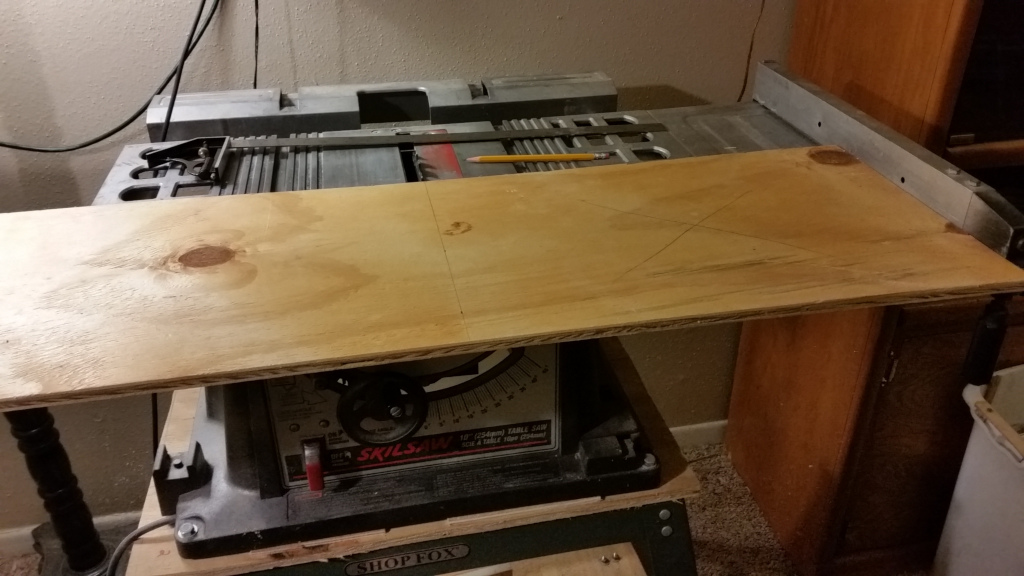Many years ago, I bought two flat plates of galvanised steel. Took them to be bent, to exactly replicate the top edge of the saw bench. Welded a couple of tabs to them, so it all lined up, when bolted to said bench. One now rests on an old table, to keep it level with the saw bench. Which now means I can cut pieces such as you want, twice the width of the saw bench,(from blade to r.h. edge) using the rip fence on the right. (Also the same on the left, if needed.)
That solves the l-r problem.
Since the r.h. edge is rough, I'd then screw a strip of, say, 2"x1/2" wood to that, overlapping and parallel to the cut line. That then butts against the rip fence, and makes the two corners 90 degrees when cutting from a larger sheet. by making the first sheet an inch or two wider than needed, that can be turned round, and the cut just made butted to the rip fence, thus cutting off the rough edge.
Sounds complex, but it works! Other than that, I have an old computer table on wheels, same height as the saw bench, which acts as a support as the work goes past the other side of the saw bench. Means I can do these jobs without bothering the missus! But I still mark the cut line regardless, as that helps me check which side of it the kerf is going.



